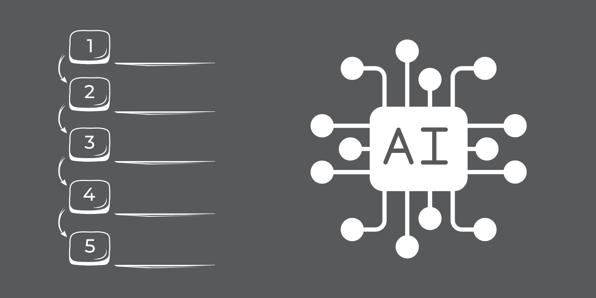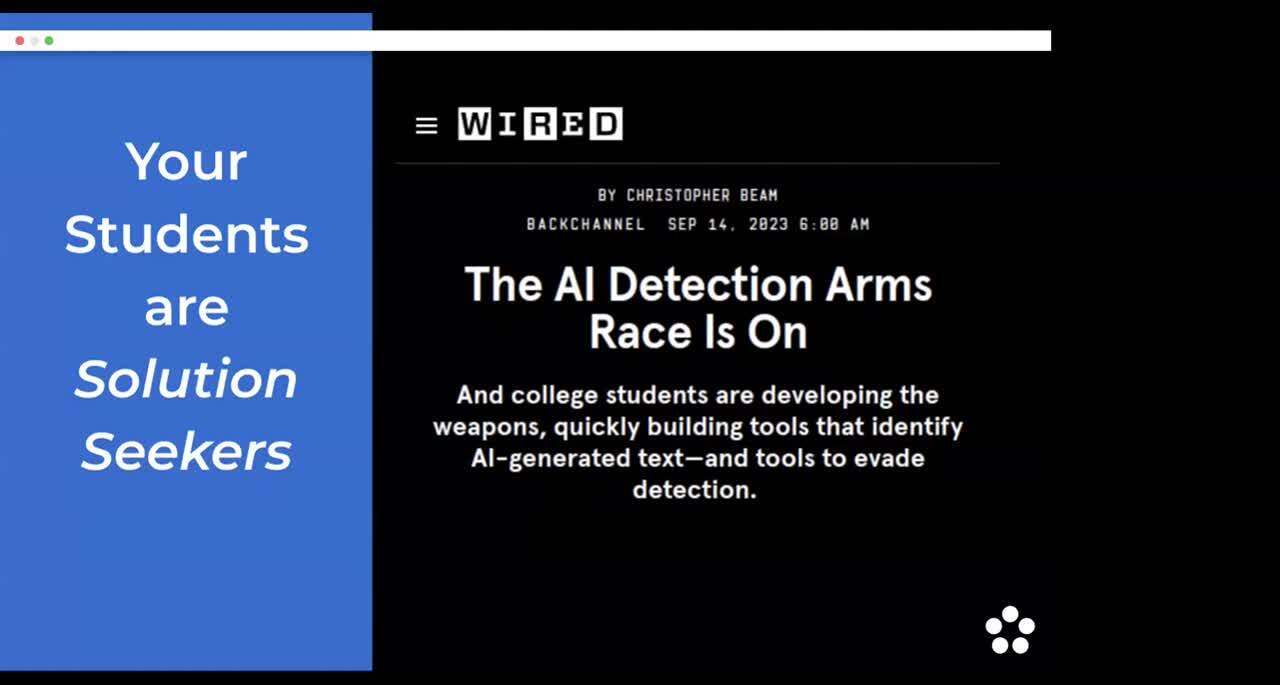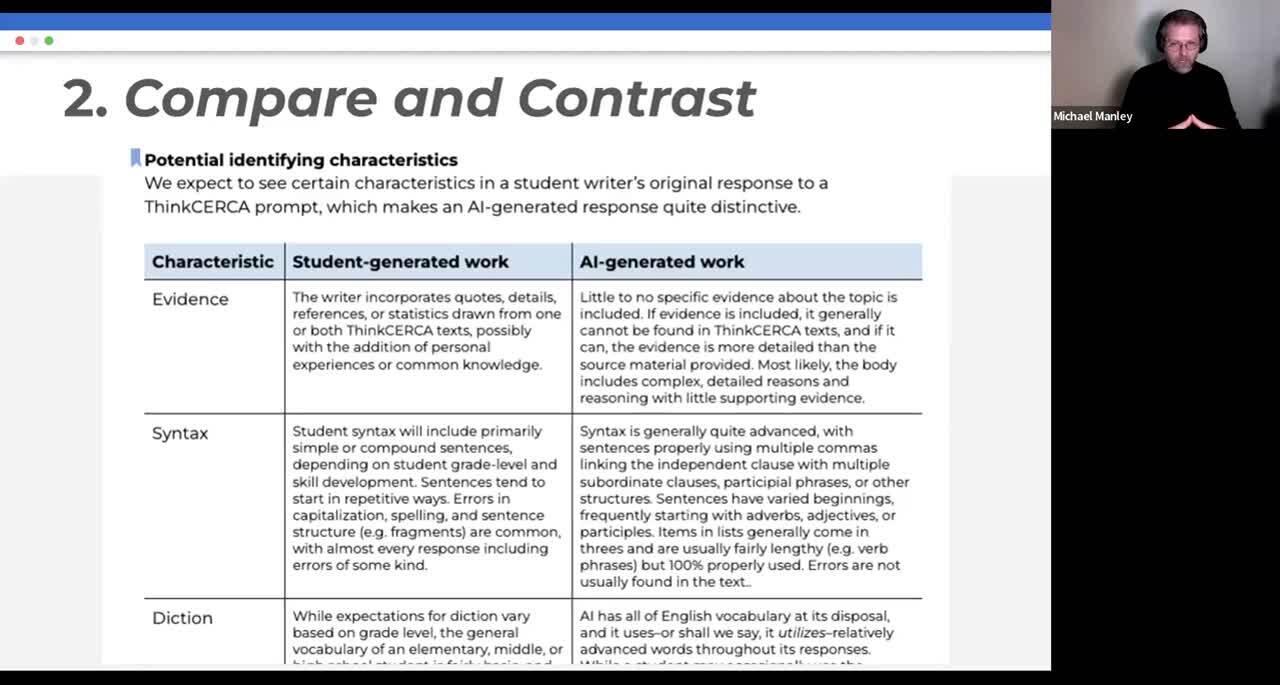
AI in Education: 5 Steps to Take Now
Let’s face it, AI has a seat in your classroom, and may be a part of your daily instruction – whether you’re ready for it or not! Learn how to be friends, and not frenemies, with AI when it comes to education.
We asked experts on Machine Learning(ML) and Artificial Intelligence (AI), Q McCallum, and ThinkCERCA Chief Technology Officer, Michael Manley, along with Daniel Rivera, Technology Director for Georgia's First District Regional Education Services Agency (RESA), responsible for providing technology leadership and professional development across the state.
Here is a compilation of 5 steps to start now when it comes to AI and education.
1. Opt Out of the Arms RaceYour students are natural solution-seekers and therefore are likely steps ahead. While AI detection programs are rapidly developing, it’s best not to seek a direct battle against AI.

2. Compare and Contrast
Embrace the act of comparing of student-generated responses vs ai-generated responses for things like Claim, Evidence, Reasoning, etc. Keep the dialogue open with students as you uncover and distinguish the two.

3. Get Curious about AI
You can learn the most about AI by getting creative – playing with it and breaking it. Try it out for personal uses, or to help you with the tedious things. It can be your first pass at a draft, or perhaps help you wordsmith something you already have a good start on.
Read more from our webinar presenters, or watch the full clip here.
Daniel Rivera: https://tiny.cc/aioverview
Q McCallum: https://qethanm.cc/tags/data-literacy/
4. Develop In-Class Uses for LLMs
Consider using AI to create worked examples of a prompt to help teach your students. Feed the prompt to ChatGPT, Bard, etc., and see what it creates. Some may create 2-3 drafts for you – each with an opportunity for you to ask your students to pick it apart and learn from dissecting the response on a topic they know and understand from class.

5. Be Open With Students and Learn Together
Create a working relationship with AI that has boundaries everyone understands. Check out this green, yellow, and red light strategy promoting conversation around how a class engages with AI for certain activities vs. others.

Be sure to check out our full conversation, along with an AI 101 overview and presentation here, and stay tuned as ThinkCERCA prepares for the release of our own curriculum-embedded AI coming soon!

